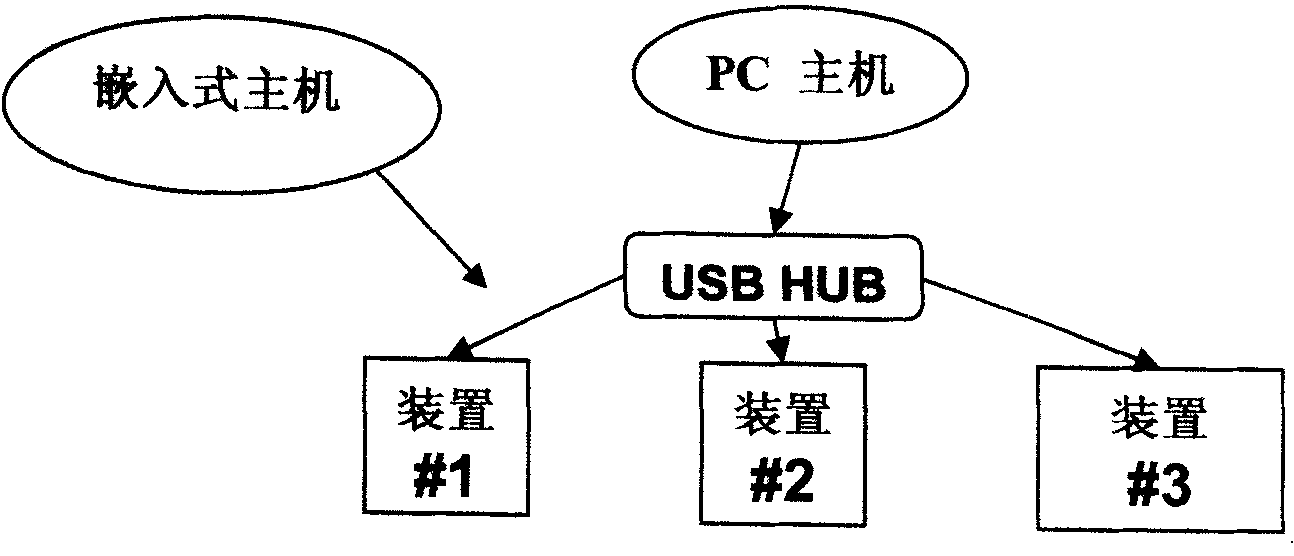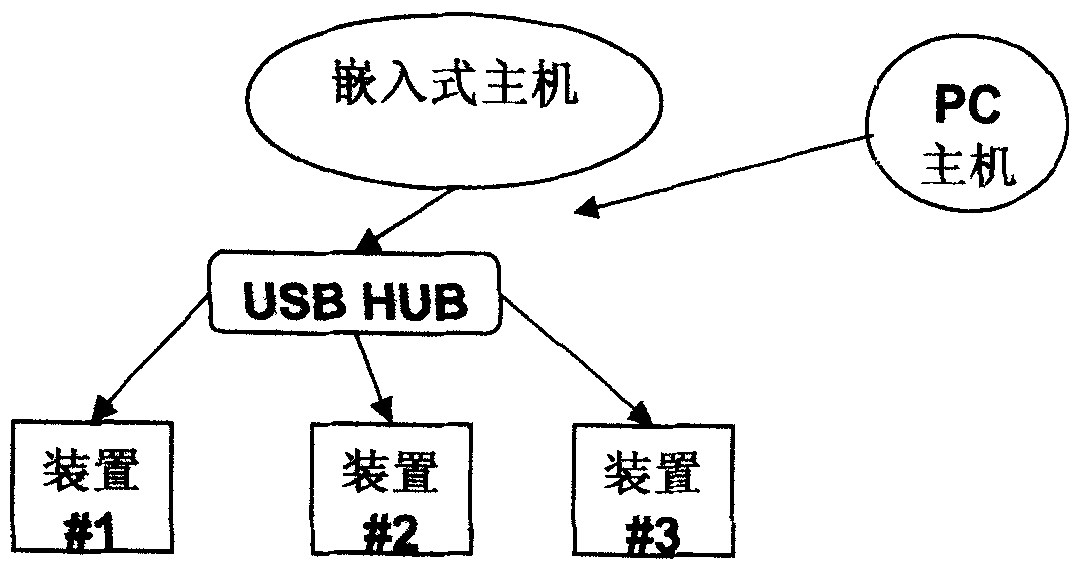Method and device for multiple USB master device for sharing USB slave device
A technology for sharing devices and ports, applied in the fields of instruments, electrical digital data processing, etc., can solve the problems of speed embedded system performance limitations, blocking unconnected masters from accessing information, and high system costs, achieving high-speed device resource sharing. Effect
- Summary
- Abstract
- Description
- Claims
- Application Information
AI Technical Summary
Problems solved by technology
Method used
Image
Examples
no. 1 example
[0052] image 3 Shown is a schematic diagram of the structure and connection relationship of the UBS sharing device in the first embodiment. As shown in the figure, the USB sharing device is respectively connected to a PC host (PC Host), an embedded host (EmbeddedHost) and multiple USB slave devices (Device 1#-3#).
[0053] The USB sharing device includes: a microcontroller (MCU), a 2×1 selection switch (2×1SWITCH), a USB hub (USB HUB) that supports at least 2 master devices (can be changed according to the number of master devices) ) and an external switch (Ext Switch). The two connection ports 1A, 1B and one common port 1a of the 2×1 selection switch are respectively connected to the host port of the embedded host, the PC host and the USB hub. 2 x 1 selector switch via control port (included Figure 4A The Enable terminal and A / B terminal in the figure and the terminal that transmits instructions to the MCU not shown in the figure) are connected to the MCU and an external...
no. 2 example
[0076] The structure of the USB sharing device in this embodiment is as follows: Figure 5 As shown, including MCU, 3 2 × 1 selection switches, a USB hub and an external switch. The connection between the USB hub and the MCU is used as a control channel, the master port of the USB hub is connected to the PC host, and its 3 slave ports are respectively connected to 3 2*1 selection switches (structure can be compared with Figure 4A same) to a connection port 1A. The other connection ports 1B of the three 2×1 selection switches are serially connected to the embedded host, and the common ports 1a of the three 2×1 selection switches are respectively connected to three USB slave devices. At the same time, each 2×1 selection switch has a control port connected with the MCU. The MCU is connected to an external switch to control its opening and closing, and one end of the external switch is connected to a power supply. The communication between the MCU and the embedded host and PC ...
no. 3 example
[0087] The structure of the USB sharing device of this embodiment is as Figure 6 As shown, it includes 2 (the same number as the master device) 1×3 selection switch, the 3 connection ports of each switch are respectively connected to 3 USB slave devices, the common port of one switch is connected to the PC host, and the other A common port of the switch is connected to the embedded host. In addition, the control ports (S0 and S1 ports in the figure) of the two switches are connected to the embedded host. where 1 x 3 selector switches can be employed with Figure 4B The 1×3 switch shown has the same structure, except that the common port is changed to connect with the USB host device during connection.
[0088] It can be seen that the two 1×3 selection switches are parallel connected to each USB slave device in a shifted and staggered manner, so that the selection control lines of the two switches can be connected in parallel, and each USB slave device is connected to the 1×...
PUM
 Login to View More
Login to View More Abstract
Description
Claims
Application Information
 Login to View More
Login to View More - R&D
- Intellectual Property
- Life Sciences
- Materials
- Tech Scout
- Unparalleled Data Quality
- Higher Quality Content
- 60% Fewer Hallucinations
Browse by: Latest US Patents, China's latest patents, Technical Efficacy Thesaurus, Application Domain, Technology Topic, Popular Technical Reports.
© 2025 PatSnap. All rights reserved.Legal|Privacy policy|Modern Slavery Act Transparency Statement|Sitemap|About US| Contact US: help@patsnap.com



